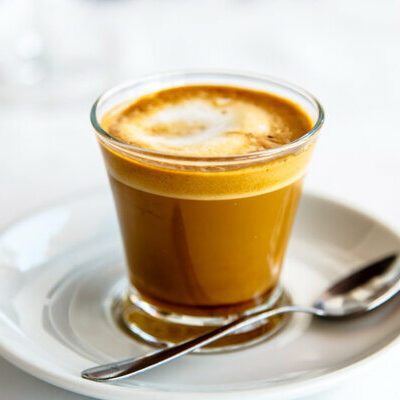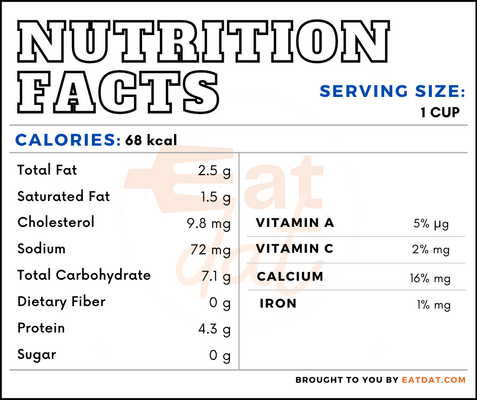
Cortado
also known as Gibraltar
What is Cortado?
Cortado is a hot beverage of Spanish origin. It is made with espresso and steamed milk. The two ingredients are used in equal quantities in order to reduce the acidity of the coffee. It is a popular drink in Spain, Portugal, and their erstwhile colonies.
- It is almost always served in a small cup.
- The beverage is rich in coffee flavor and does not contain any sugar.
The most popular drinks from Spain include:
- Sangria
- Cortado
- Rioja
- Cava
- Horchata
- Ribera del Duero
- Tempranillo
- Sherry
- Tinto de Verano
- Chocolate Caliente
Origin of cortado
This coffee drink is of Spanish origin and was invented in the Basque region of Spain. The name of the drink comes from the Spanish word ‘cortar’, which means ‘to cut’. It eventually spread to Portugal and neighboring European countries, from where it spread farther to the American and Caribbean colonies. The cortado became hugely popular in Cuba and was brought by Cubans to the US in the 1960s.
Nutrition
Nutritional profile for cortado (1 cup):

Regular consumption of milk may help in preventing the risk of obesity, diabetes, cardiovascular diseases, osteoporosis, and certain types of cancers such as colorectal cancer, bladder cancer, gastric cancer, and breast cancer. Also, the calcium in the milk is useful to prevent hypertension and maintain bone health. Coffee contains high levels of antioxidants, which help prevent certain types of cancer and regulate insulin levels in addition to providing an instant buzz. In addition, caffeine is believed to protect from dementia and Alzheimer’s. However, high doses of caffeine can lead to heart problems, as well as palpitations, high blood pressure, irregular heart rate, and heart attacks.
Commercial production
To prepare a Cortado, the only ingredients required are espresso and milk. It is best to opt for a thicker and more robust coffee. Whole fat milk offers the best flavor and it must be steamed for that light and frothy taste. The milk and espresso must be used in equal quantities. First, the espresso is poured into a small cup and then the milk is poured over it. The Portuguese version uses milk to espresso in a 3:1 ratio, while the Cuban version is sweet and thick.
Coratado recipes
This drink is usually very specific to measurements. It is almost always served in a 66 ml size, except in the US, where it is served in a 120 ml or larger cup. In Cuba, sugar is added and the drink is sweetened to become a dessert-style drink. Here are a few recipes to try:
FDA regulations
The USDA regulates the production of coffee beans. Also, it is involved in the import of coffee from other coffee producing countries. Some aspects of the processing of coffee beans come under the purview of the FDA regulations. The processing of green coffee beans, such as roasting, grinding, and packaging are strictly regulated. Additionally, these products are checked to ensure they do not contain allergens or pose a health hazard.
The FDA regulates milk and describes it as the lacteal secretion from the milking of healthy cows. It should be free of colostrum. Packaged milk must be pasteurized and shall not contain less than 8¼ percent milk solids.
References
What is it about coffee? Harvard Health Publishing, Harvard Medical School, https://www.health.harvard.edu/staying-healthy/what-is-it-about-coffee
Eskelinen, Marjo H, and Miia Kivipelto. “Caffeine as a protective factor in dementia and Alzheimer’s disease.” Journal of Alzheimer’s disease : JAD vol. 20 Suppl 1 (2010): S167-74. doi:10.3233/JAD-2010-1404, https://pubmed.ncbi.nlm.nih.gov/20182054/
Thorning, Tanja Kongerslev et al. “Milk and dairy products: good or bad for human health? An assessment of the totality of scientific evidence.” Food & nutrition research vol. 60 32527. 22 Nov. 2016, doi:10.3402/fnr.v60.32527, https://www.ncbi.nlm.nih.gov/pmc/articles/PMC5122229/
